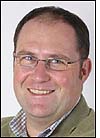At the International Air Transport Association (IATA) Joint Passenger Services Conference held in Geneva this week, IATA member airlines unanimously approved the IATA Recommended Practice (RP) 1740C document, which endorses the use of ultra-high frequency tags and readers (interrogators) compliant with the ISO 18000-6C protocol as a global air interface standard for RFID baggage tags. ISO 18000-6C is a candidate standard being considered for adoption by the International Standards Organization, and the protocol is expected to incorporate EPCglobal’s Gen 2 air interface standard.
IATA’s charter is to work with airlines, airport authorities and other air transportation organizations to make the industry safer, more profitable and more efficient. The group says the decision paves the way for widespread use of RFID for baggage management by airports and airlines.
Andrew Price, IATA’s RFID project manager, says the introduction of IATA standard RP1740c also sends a clear signal to RFID chip manufacturers that there is a new market segment to address. This, he says, should help drive the price of an RFID baggage tag below its current average of $ 0.21.
The recommendation that baggage tags comply with the use of ISO 18000-6C initiated with the Joint ATA/IATA RF Interest Group (RFIG), which reviews and updates radio frequency specifications for baggage handling. The RFIG also defines objectives and criteria for IATA’s testing of RFID for baggage tracking.
According to IATA, of the more than 1.7 billion pieces of luggage handled annually, an average of 1 percent is mishandled, with each mishandlin costing an airline an average of $100. Based on its field trials of the technology, IATA says RFID can deliver a 12 percent reduction in the number of lost and delayed bags. The organization also claims that if tag costs were to fall to $0.10 each, RFID could provide the industry with US$760 million annually in net savings—factoring in the cost of the tags—once the technology was widely deployed.
According to IATA, bags can be sorted and loaded faster using RFID to identify the bags, rather than with bar codes systems. The organization says RFID can reduce the number of mishandled bags and associated costs, and that tests have shown read rates of baggage tags embedded with RFID tags to be in the high-90 percent range. Bar code baggage tag read rates, on the other hand, average 85 percent, according to the IATA, though other industry experts put that average at 75 percent.
IATA advocates the use of RFID technology to improve baggage handling as part of its Simplifying the Business initiative, which also endorses the use of bar-coded boarding passes and self-service kiosks for passenger check-in.
The use of UHF tags and interrogators is not licensed in a uniform manner across the world. UHF RFID systems must operate between 902 MHz and 928 MHz in the United States, 865.6 MHz to 867.6 MHz in the European Union, and 950 to 956 MHz in Japan. This summer, the U.S. Transportation Security Administration (TSA) completed a feasibility trial proving UHF tags could be encoded at frequencies at the high end of the UHF band (950 MHz to 956 MHz) and later read in the middle (902 MHz to 928 MHz) and low (865.6 MHz to 867.6 MHz) portions of the band.
This was proven by encoding tags in Asia, then sending them to the United States and Europe, where 99.2 percent of the tags were successfully read. The TSA also worked with EPCglobal to encode electronic product codes (EPCs) to RFID tags, and to test whether airlines and airports could share RFID data as EPCs by using the types of data standards EPCglobal is developing for sharing product data over the EPCglobal Network. Such data standards will be used by manufacturers, retailers and other members of the retail supply chain. The trial was reportedly successful, and the TSA recommended the use of the EPCglobal data model to IATA.
UHF is also emerging as a preferred frequency for tracking airline parts. See Airplane Industry Looks at UHF and Boeing’s Flight Plan for Dreamliner Tags. In May, the U.S. Federal Aviation Administration approved the use of passive RFID tags, including those operating at ultra-high frequencies in labels applied to individual airline parts (see FAA to Publish Passive RFID Policy). The TSA and EPCglobal are currently working on a field trial using RFID to track and trace airplane cargo.


